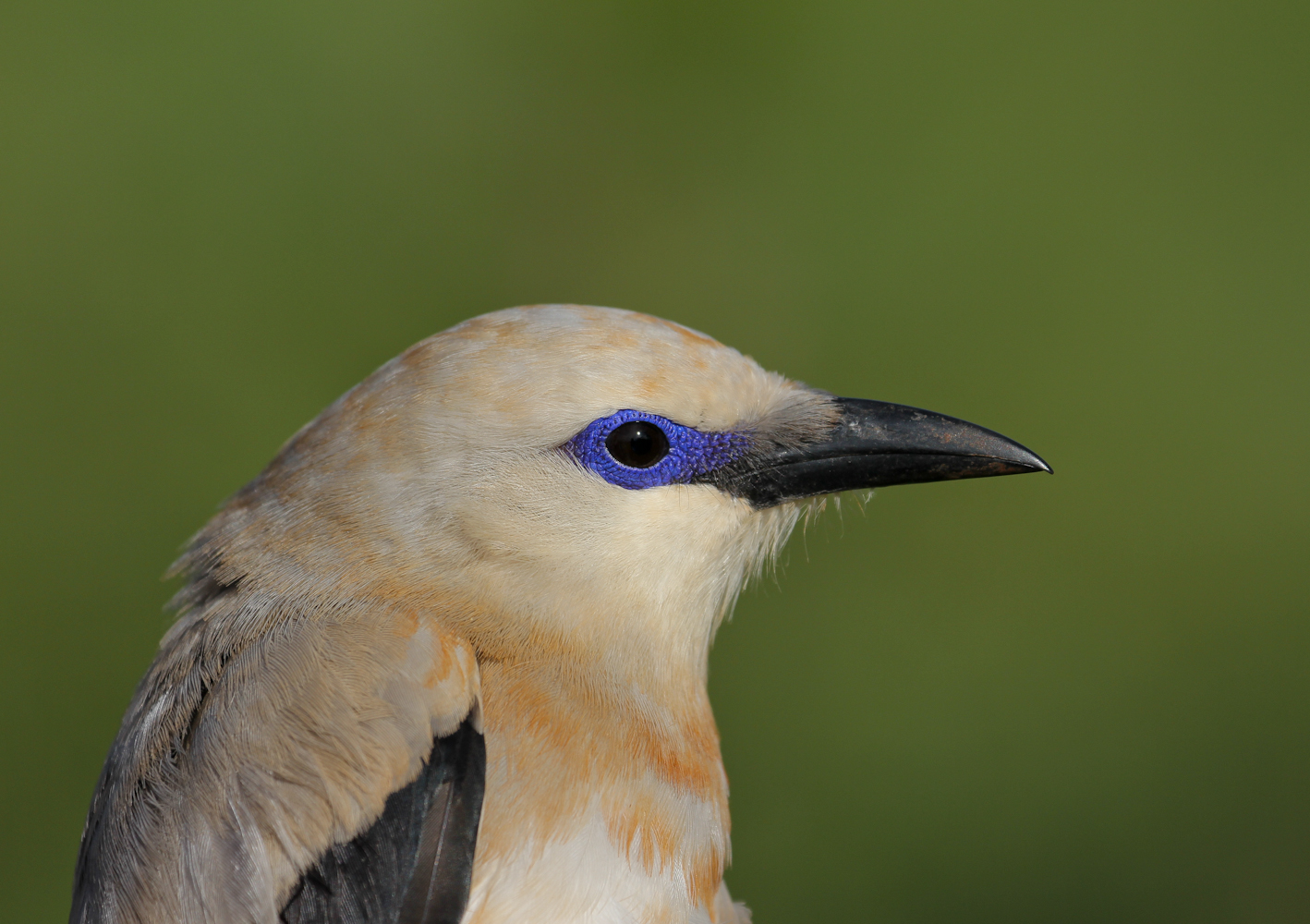
‘Enigmatic and baffling’, this is how scientists describe one of the most remarkable ornithological discoveries of the 21st century. The Ethiopian Bush-crow (Zavattariornis stresemanni) first became known to science relatively recently, during an expedition to southern Ethiopia in 1937 led by Edoardo Zavattari, after whom the bird was named. Its origins and evolution have remained somewhat of a mystery ever since, with debate continuing over where exactly in the tree of life this species belongs.
‘There is no doubt in my mind that they are at least from the crow family’ says PhD student Andrew Bladon from the University of Cambridge, who is part of a project that seeks to find out more about these unusual birds.’ He adds, ‘I still can’t see or hear magpies without thinking of Bush-crows, the way they behave is so similar, and the tone of their calls is definitely the harsh sound of a crow, not the melodic sound of a starling.’
Recent genetic analysis has confirmed that they are most closely related to the ground jays of central Asia, another group of birds from the crow (Corvidae) family. ‘It’s still not clear how they came to persist in its small range, thousands of kilometres from their nearest relatives’ comments Andrew.

Aside from their mysterious evolutionary history, numerous odd characteristics make the Ethiopian Bush-crow unique. First, is the strange flesh coloured flange behind the eye which can be opened and closed, and is possibly used in signalling between birds. Secondly, they are highly social, especially when it comes to nesting. ‘Bush-crows appear to be co-operative breeders. We’ve never seen fewer than three adult birds tending a nest—even outside of the breeding season birds tend to visit nests and muck around with sticks.’ Bush-crow nests are large, spherical and built from acacia twigs. ‘My guess would be that nest building plays a large part in social bonding’ says Andrew, who has spent many months in Ethiopia observing the birds.
Amongst other complex behaviours is allopreening (grooming of other individuals), an activity more normally seen in mammals. Yet, by far the most puzzling aspect of the Ethiopian Bush-crow, and the reason it causes so much concern for conservationists, is its tiny range. Present in an area of Southern Ethiopia just 160km north to south, and 100km east to west, the entire global population is thought to be a little over 9000 pairs. Despite apparently ideal habitat in the surrounding region, it has never been observed beyond this invisible barrier.
So why is this incredible bird restricted to such a minuscule range? Recent research by scientists and conservationists have shown that this tiny pocket of Southern Ethiopia is very slightly dryer, cooler and more seasonal than the surrounding area. The difference is small, but the species appears physiologically incapable of surviving in hotter climates. With climate change gathering pace at an alarming rate, the future is bleak for the Ethiopian bush-crow.
‘Given its apparent sensitivity, climate change represents the critical long-term threat’ says ornithologist and conservation ecologist Samuel Jones who has also worked in the region. Surrounded by hills, its habitat is likely to vanish rather than shift Northwards.

In the short term, the Ethiopian Bush-crow is also under threat due to increasing numbers of people and the spread of agriculture. In the last few decades the human population of the region quadrupled. Meanwhile, 80% declines in Bush-crow observations were recorded in the Yabello Wildlife Sanctuary, suggesting that the population was decreasing very rapidly. This prompted the International Union for the Conservation of Nature to list the Ethiopian Bush-crow as endangered.
The good news is that with increasing attention from scientists, the Ethiopian Bush-crow is beginning to reveal its secrets. ‘Only in the last few years has the species had any designated focus as a research topic’ says Samuel, and with increased knowledge comes better-designed conservation management plans. So next time you’re in Ethiopia, head south and you might just catch a glimpse of this weird ornithological oddity.
